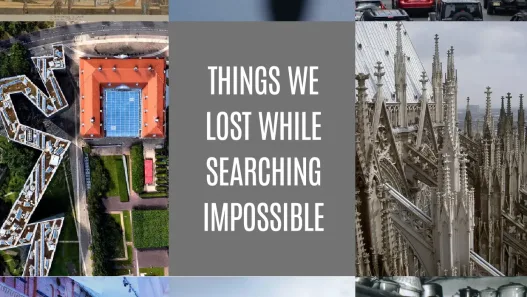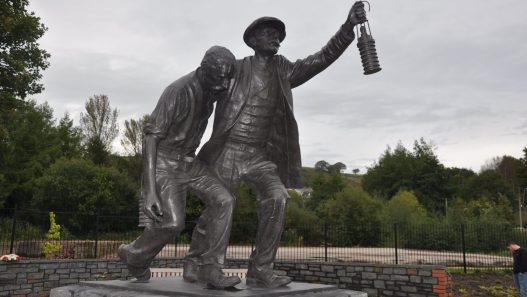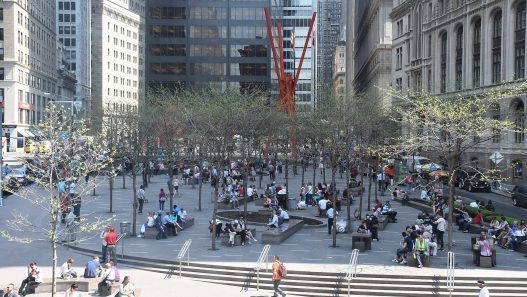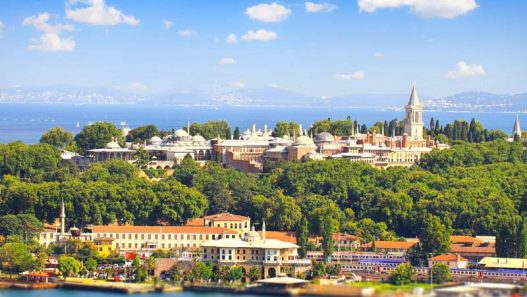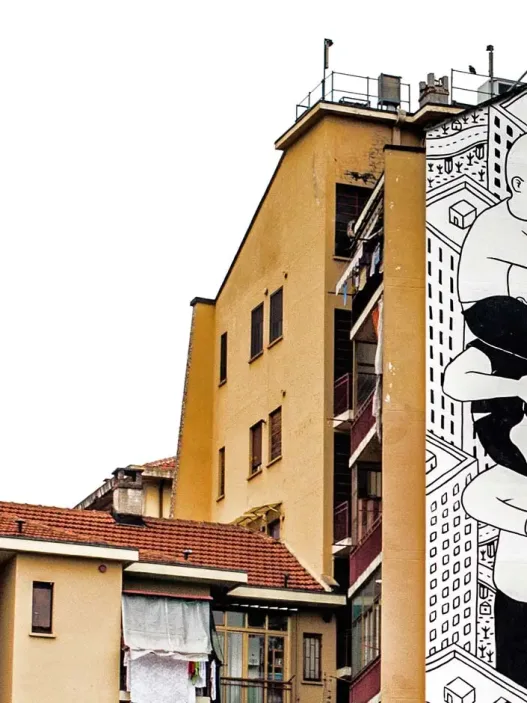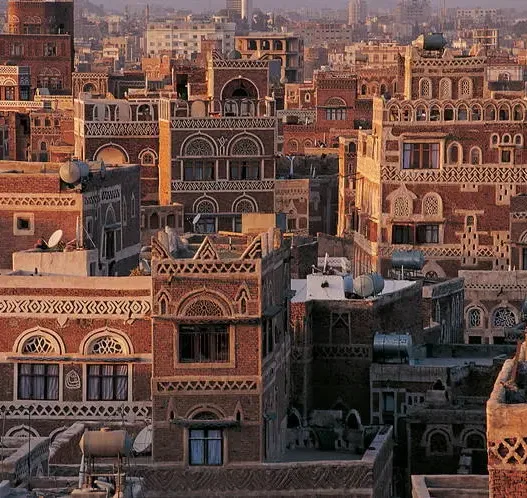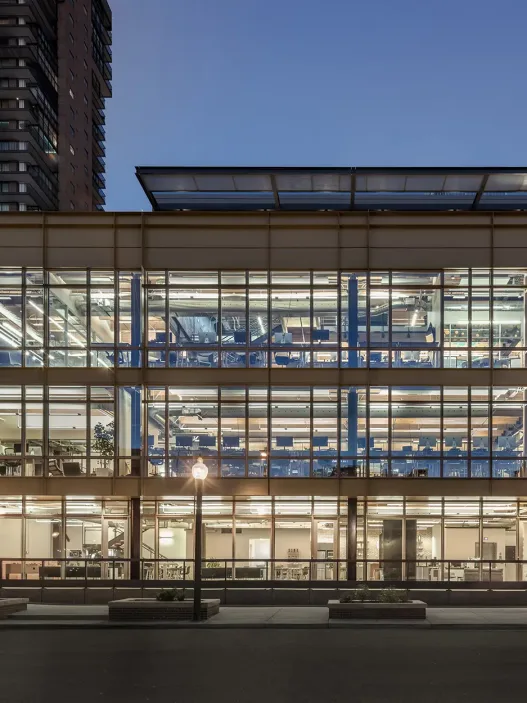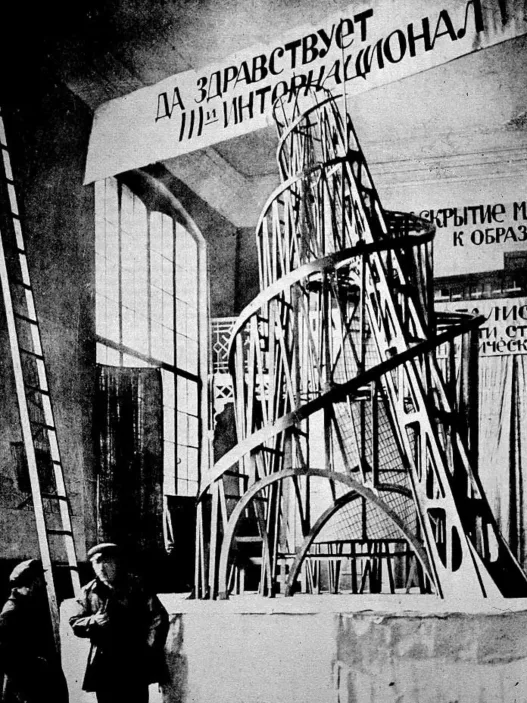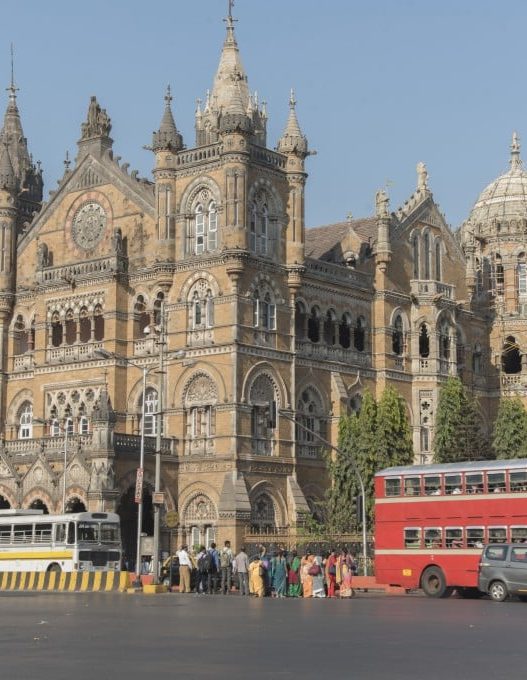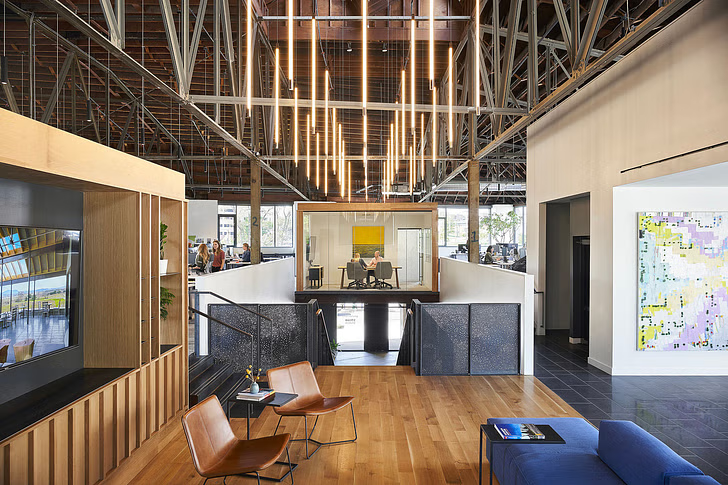Abu Dhabi, the capital of the United Arab Emirates, is a city where past and future harmoniously coexist. Its dazzling skyline of modern skyscrapers contrasts with traditional buildings that reflect a rich cultural heritage. This architectural landscape is not just a collection of buildings; it tells a story of ambition, identity and evolution. As you stroll through the city, you can witness how each structure contributes to a vibrant narrative that honours the past while embracing modernity.
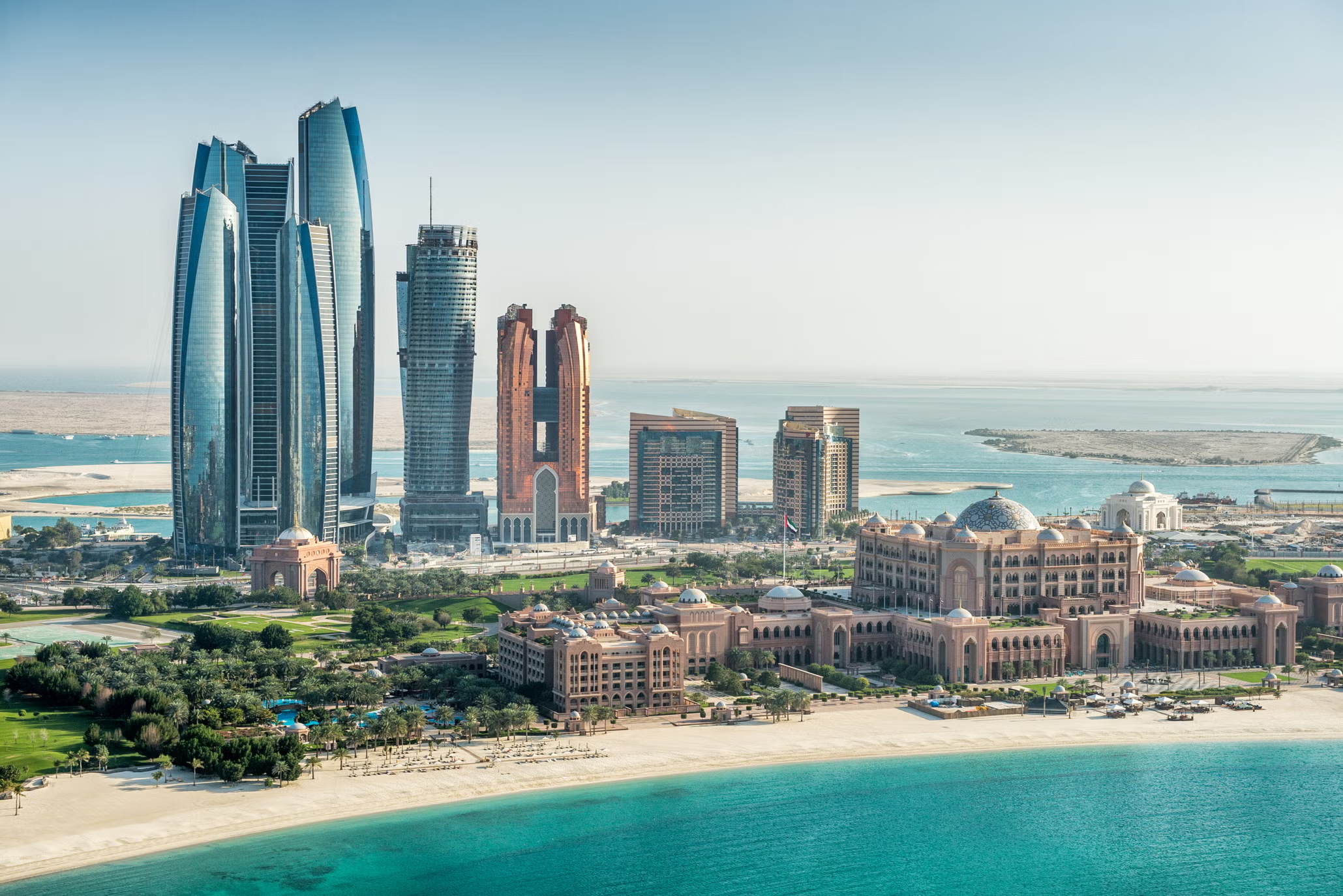
Overview of Abu Dhabi’s Development
Abu Dhabi’s development is a remarkable story of transformation. From a modest fishing village in the 18th century, the city transformed into a thriving metropolis, especially after the discovery of oil in the 1950s. This newfound wealth encouraged rapid urbanisation and led to ambitious construction projects aimed at redefining the city’s identity. The government has invested heavily in infrastructure, education and cultural institutions, creating a dynamic environment for residents and visitors alike. Today, Abu Dhabi is recognised for its impressive skyline, including iconic structures such as the Etihad Towers and the Louvre Abu Dhabi, showcasing not only its architectural prowess but also its commitment to cultural exchange.
The Importance of Architecture in Cultural Identity
Architecture plays a crucial role in shaping cultural identity and serves as a physical manifestation of a society’s values, beliefs and history. In Abu Dhabi, buildings are not just functional spaces; they symbolise a blend of tradition and innovation. The use of local materials, traditional designs and Islamic motifs in modern structures reflects the UAE’s heritage while responding to contemporary needs. The Sheikh Zayed Grand Mosque, for example, is a testament to Islamic architecture, leaving visitors from around the world in awe of its splendour and spiritual significance. This relationship between architecture and identity fosters a sense of belonging and pride among residents, connecting them to their cultural roots.
A Blend of Modernism and Tradition
One of the most striking features of Abu Dhabi’s architectural landscape is the seamless blending of modernism and tradition. Architects and designers are increasingly embracing this duality, creating structures that push the boundaries of contemporary design while paying homage to the past. Qasr Al Watan, a presidential palace, exemplifies this mix, showcasing traditional Arabic craftsmanship alongside modern amenities. The interplay of light and space in these buildings not only enhances their aesthetic appeal, but also encourages a dialogue between generations. This fusion invites discovery and reflection, encouraging visitors to appreciate the layers of history embedded within modern frameworks.
Key Influences in Abu Dhabi’s Architecture
Abu Dhabi, the capital of the United Arab Emirates, is a city where wealth meets tradition, creating a unique architectural landscape that reflects its rich history and rapid development. This blend of modernism and cultural heritage is evident in its iconic structures, which serve not only as functional spaces but also as symbols of the city’s aspirations and identity. Each building tells a story, showcasing the art, innovation and vision that defines Abu Dhabi.
Iconic Buildings in Abu Dhabi
Abu Dhabi is home to many architectural masterpieces that capture the essence of its cultural and modern ethos. They are not just landmarks; they are an integral part of the city’s identity and provide insight into the values and aspirations of its people. Let’s explore some of the most iconic buildings that adorn this vibrant city.
Sheikh Zayed Grand Mosque
The Sheikh Zayed Grand Mosque stands as a stunning testament to Islamic architecture and cultural harmony. Completed in 2007, this grand mosque is one of the largest in the world, accommodating more than 40,000 worshippers. Its design is a harmonious blend of various architectural styles, including Moorish, Mughal and Persian influences.
As visitors approach, they are greeted by the mosque’s impressive white marble façade adorned with intricate floral patterns and semi-precious stones. The grand dome, reaching metres in height, is surrounded by domes of different sizes, creating a breathtaking silhouette. The mosque also boasts the world’s largest hand-woven carpet and eye-catching chandeliers, adding to its luxurious ambience.
Beyond its architectural beauty, the mosque serves as a cultural bridge, inviting people of all backgrounds to learn about Islam and Emirati culture. It hosts educational programmes and community events that promote understanding and dialogue between different cultures.
Louvre Abu Dhabi
Opened in 2017, the Louvre Abu Dhabi is an extraordinary cultural institution that brings together art and history from around the world. Designed by renowned architect Jean Nouvel, the museum is renowned for its innovative design featuring a striking dome that creates a “rain of light” effect as sunlight filters through its geometric patterns.
The museum’s galleries are arranged chronologically and showcase a diverse collection spanning thousands of years and various civilisations. From ancient artefacts to contemporary art, the Louvre Abu Dhabi embodies the spirit of cultural exchange. It emphasises the interconnectedness of human experiences, encouraging visitors to appreciate the common heritage of humanity.
This architectural marvel is not just a space for exhibitions; it serves as a vibrant cultural centre hosting workshops, lectures and performances. Its location on Saadiyat Island demonstrates Abu Dhabi’s commitment to cultural development and positions the city as a global arts destination.
Emirates Palace Hotel
Emirates Palace Hotel is synonymous with luxury and glamour. Opened in 2005, this five-star hotel is an architectural marvel offering a striking blend of Arabic and modern design elements. The palace-like structure is adorned with golden domes, intricate mosaics and opulent interiors that reflect the UAE’s rich heritage.
With luxurious rooms and suites, Emirates Palace offers an unrivalled level of service and comfort. Guests can enjoy a private beach, lush gardens and a world-class spa. The hotel is also recognised for its culinary excellence, with restaurants serving a variety of international cuisine.
Beyond luxury accommodation, Emirates Palace also hosts high-profile events such as conferences, weddings and cultural festivals. It symbolises Abu Dhabi’s position as a tourism and hospitality centre in the region.
Etihad Towers
Etihad Towers is an iconic multi-tower complex dominating the Abu Dhabi skyline. Completed in 2011, the five towers are a striking example of modern architecture combining sleek design with the latest technology. The tallest tower, Tower 2, rises metres high, offering breathtaking panoramic views of the city and the Arabian Gulf.
The towers house a mix of residential, commercial and hospitality space, including the luxury Jumeirah at Etihad Towers hotel. The complex also features high-end retail shops, fine restaurants and a variety of entertainment options, making it a vibrant destination for residents and visitors alike.
Etihad Towers is not just an architectural landmark; it represents the ambition and progress of Abu Dhabi as it continues to develop as a global city. A symbol of modern luxury and sophistication, the towers attract both tourists and business travellers.
Abu Dhabi National Exhibition Centre
Abu Dhabi National Exhibition Centre (ADNEC) is a major venue for exhibitions, conferences and events in the region. Opened in 2007, this spacious facility was designed to meet the needs of a rapidly growing economy. Its modern design features large exhibition halls, meeting rooms and a spacious lobby capable of hosting a wide range of events.
ADNEC plays a vital role in promoting business tourism in Abu Dhabi. It hosts major international trade fairs, conferences and cultural events that attract participants from around the world. The centre’s strategic location, coupled with state-of-the-art facilities, makes it a hub for networking and collaboration.
ADNEC’s design emphasises sustainability and accessibility, reflecting Abu Dhabi’s commitment to creating a thriving and inclusive environment. As the city continues to grow and diversify, the exhibition centre will play an increasingly important role in shaping the economic landscape.
Through these iconic structures, Abu Dhabi showcases its unique blend of modernity and tradition, creating a rich tapestry of architectural excellence that tells the story of a city in constant evolution. Each building is a reflection of the passions and cultural heritage of its people, making Abu Dhabi a fascinating place for exploration and discovery.
Architectural Styles and Trends
Abu Dhabi, the capital of the United Arab Emirates, is a city where past and future coexist in a dazzling display of architectural prowess. Its skyline is a testament to modernity, yet deeply connected to the region’s rich cultural heritage. This complex mix of styles and trends not only defines the visual identity of the city, but also reflects the values and aspirations of its people.
Modernist Influences
Modernism in Abu Dhabi is characterised by bold lines, innovative materials and a commitment to functionality. This architectural trend emphasises simplicity and clarity, often stripping away unnecessary ornamentation to focus on form and structure. Notable examples include the Aldar Headquarters, which features a unique circular design symbolising progress and forward thinking. This building exemplifies how modernist principles can coexist with the surrounding desert landscape, creating a harmonious yet striking visual presence.
The use of glass and steel, characteristic of many modern buildings, allows natural light to flood the interiors while offering stunning views of the cityscape. This approach not only improves energy efficiency, but also encourages a connection between indoor and outdoor environments. As Abu Dhabi continues to develop, these modernist influences will likely shape its architectural future, pushing boundaries and redefining urban living.
Islamic Architectural Elements
While modernism plays an important role in Abu Dhabi’s architectural identity, the influence of Islamic architecture remains profound. This style is characterised by intricate geometric patterns, elaborate calligraphy and the iconic use of arches and domes. The Sheikh Zayed Grand Mosque is a prime example of this fusion, combining modern engineering with traditional Islamic art. Its striking white marble facade and spacious courtyard invite visitors to experience a space that goes beyond mere functionality.
Islamic architecture in Abu Dhabi often incorporates elements that reflect the history and cultural significance of the region. Ornate mashrabiya curtains embody both beauty and practicality, allowing ventilation while providing privacy. These elements serve not only as aesthetic features, but also as reminders of the rich heritage that continues to influence contemporary design.
Sustainable Design Practices
As a city that thrives on innovation, Abu Dhabi has adopted sustainable design practices to address environmental challenges. The focus on sustainability is evident in projects such as Masdar City, a pioneering initiative that aims to create a zero-carbon urban environment. Here, architecture is not just about aesthetics, but also about creating spaces that minimise their ecological footprint.
Sustainable design in Abu Dhabi encompasses the use of renewable materials, energy-saving technologies and water conservation methods. Buildings are often equipped with solar panels and green roofs that not only contribute to energy savings but also enhance the urban landscape. This commitment to sustainability reflects a broader global trend that positions Abu Dhabi as a leader in environmentally friendly architecture.
Technology Integration
The integration of technology into architecture has revolutionised the way buildings are designed, constructed and experienced. In Abu Dhabi, smart technologies are being utilised to enhance functionality and improve the quality of life for residents. For example, the use of advanced building management systems allows real-time monitoring of energy consumption and climate control, ensuring optimum comfort and efficiency.
Furthermore, augmented reality and virtual reality are increasingly being used in the design process, allowing architects to visualise projects before they are built. This technological integration encourages collaboration and creativity, enabling architects to push the boundaries of what is possible. As Abu Dhabi continues to invest in smart city initiatives, the role of technology in architecture will become more important.
Artistic Collaborations in Architecture
Abu Dhabi’s architectural landscape is enriched by artistic collaborations that bring together architects, artists and cultural visionaries. These partnerships often result in unique spaces that not only serve functional purposes, but also engage society on an emotional and aesthetic level. The Louvre Abu Dhabi, for example, is a striking example of this synergy. Its intricate dome, designed by Jean Nouvel, transforms sunlight into a mesmerising display, creating an atmosphere that celebrates art and culture.
Artistic collaborations go beyond large institutions and permeate public spaces, where sculptures and installations beautify the urban environment. This blending of art and architecture encourages a sense of place and identity, inviting residents and visitors to experience the richness of Abu Dhabi’s cultural fabric. Through these collaborations, architecture becomes a vehicle for storytelling, bridging the gap between tradition and modernity.
As a result, architectural styles and trends in Abu Dhabi reflect the dynamic interplay between modernism, cultural heritage, sustainability, technology and art. This multi-faceted approach not only shapes the city’s skyline, but also enriches the lives of its residents, making Abu Dhabi a truly remarkable example of contemporary architecture in a historic context.
Cultural Importance of Architecture in Abu Dhabi
Reflection of Heritage and Tradition
Abu Dhabi’s architecture acts as a living tapestry that brings together the rich cultural heritage and traditions of the Emirati people. The city boasts structures that are not only visually stunning, but also deeply rooted in the region’s history. Traditional elements such as the use of arched doorways, intricate geometric patterns and vibrant tile work reflect the community’s Islamic heritage and Bedouin influences.
For example, the Sheikh Zayed Grand Mosque stands as a monumental example of this mix. Its majestic domes and minarets showcase a contemporary interpretation of classical Islamic architecture, while the interior features calligraphy, marble inlays and elaborate chandeliers glorifying local art. Such buildings are not merely functional; they tell stories of the past, reminding residents and visitors alike of the cultural foundations upon which the nation was built.
The Role of Architecture in Community Engagement
In Abu Dhabi, architecture is a tool that goes beyond aesthetics to encourage civic engagement. Public spaces, parks and plazas are designed to encourage social interaction and cultural exchange. The Corniche, with its picturesque waterfront and recreational areas, serves as a gathering point for families, tourists and locals, fostering a sense of belonging and community spirit.
Moreover, cultural institutions such as the Louvre Abu Dhabi are designed not only to host art, but also to engage the public in a meaningful way. The architectural brilliance of the museum, with its iconic dome filtering sunlight into the galleries, invites visitors to explore art and history, creating a shared cultural experience. These spaces reflect a commitment to inclusivity, ensuring that architecture plays a vital role in the social fabric of the city.
Architectural Education and Conservation
As Abu Dhabi develops, so does the importance of architectural education and conservation. Institutions such as Abu Dhabi University offer programmes focused on sustainable design and heritage conservation, preparing future architects to honour the city’s past while innovating for the future.
Conservation efforts are crucial as they preserve the integrity of historic sites in the face of rapid urban development. The restoration of traditional buildings such as Qasr Al Hosn emphasises the city’s commitment to preserving its architectural heritage. By educating new generations about the historical significance of these buildings, Abu Dhabi ensures the preservation of its cultural identity in the midst of modernisation.
Impact on Tourism and Economy
Abu Dhabi’s architectural landscape contributes significantly to its economy, particularly through tourism. Iconic structures attract millions of visitors each year, drawn by the glamour of modern marvels and historical treasures. The combination of wealth and cultural storytelling creates a unique experience that enhances the city’s global profile.
For example, museums, art galleries and cultural festivals not only showcase traditional and contemporary art, but also revitalise local businesses and create jobs. The economic benefits extend directly beyond tourism, as architectural projects often lead to infrastructure improvements and urban revitalisation, further embedding the city’s cultural significance into the economic framework.
Future Directions for Cultural Architecture
Looking ahead, the future of cultural architecture in Abu Dhabi holds exciting developments. As the city embraces sustainable practices, architects are increasingly incorporating eco-friendly materials and energy-efficient designs into their projects. This approach not only honours the environment, but also aligns with the UAE’s vision for a sustainable future.
There is also an increasing emphasis on integrating technology with architecture to enhance cultural experiences. Smart buildings utilising augmented reality can allow visitors to interact with the history of an area in innovative ways.
Ultimately, the future of architecture in Abu Dhabi will continue to reflect its rich heritage while embracing modernity, creating spaces that foster community, celebrate culture and support economic growth. In this way, Abu Dhabi’s architectural narrative remains a dynamic dialogue between past, present and future.
Challenges and Controversies
Abu Dhabi, the capital of the United Arab Emirates, is a city where striking modern architecture juxtaposes with deep-rooted cultural heritage. While the skyline boasts futuristic structures, the city is grappling with various challenges arising from this rapid transformation. The way in which these challenges are met will shape the future of the city, affecting its identity and the lives of its inhabitants.
Balancing Modernity and Tradition
As Abu Dhabi continues to develop, one of the key challenges is finding a harmonious balance between modernity and tradition. The city has made significant strides in developing avant-garde buildings such as the iconic Louvre Abu Dhabi and the soaring Etihad Towers. But these structures are often in stark contrast to the Emirates’ traditional lifestyle and architecture, which emphasises community, hospitality and a connection to nature.
In this context, the preservation of cultural heritage is of great importance. Efforts to incorporate traditional elements into modern designs are being explored. For example, many new projects now focus on using local materials and architectural styles that reflect the history of the area. This blending of old and new can help develop a sense of identity and continuity for residents who may feel alienated by the rapid pace of change.
Environmental Concerns
Another important challenge facing Abu Dhabi is environmental sustainability. The rapid urbanisation of the city has led to increased energy consumption, waste production and water scarcity. The affluent lifestyle associated with modern living often comes at a high environmental cost. Extreme temperatures in the region exacerbate these problems by requiring intensive air conditioning and energy use.
In response, the government has launched several sustainability projects, such as Masdar City, which aims to become a zero-carbon city powered by renewable energy. These initiatives underline a growing awareness of the need for sustainable development practices. They also demonstrate the city’s commitment to addressing environmental concerns while maintaining its ambitious growth trajectory.
Cultural Appropriation in Design
Cultural appropriation is another layer of complexity in Abu Dhabi’s architectural narrative. As international architects and designers contribute to the city’s skyline, questions arise about the authenticity of and respect for local traditions. Critics argue that some projects may unintentionally remove the essence of Emirati culture and replace it with a facade of global architectural trends.
This challenge requires a more thoughtful approach to design that honours and incorporates local culture. Involving local artists, historians and architects in the design process can help to ensure that new developments match the values and heritage of the community. By fostering a sense of ownership among residents, the city can create spaces that are not only modern but also culturally rich.
The Role of the State in Urban Planning
The Government plays a crucial role in shaping Abu Dhabi’s urban landscape. It guides the development of infrastructure, public spaces and housing through strategic planning and investment. However, the top-down approach can sometimes ignore community needs and aspirations.
To address this, Abu Dhabi is increasingly involving citizens in the planning process and seeking their views on projects that affect their neighbourhoods. Initiatives such as public forums and community consultations are becoming increasingly common, allowing residents to voice their views and contribute to the design of their city. This collaborative approach can increase urban resilience and ensure that developments are in line with community aspirations.
Public Perception and Community Response
Public perception of Abu Dhabi’s architectural evolution is varied and complex. Many residents are proud of the city’s rapid modernisation and the global recognition it has brought. However, there is also a palpable sense of nostalgia for the past, as some fear that the relentless pace of development could erode the cultural fabric of society.
Some advocate the preservation of traditional neighbourhoods, while others embrace the new opportunities offered by modern architecture. This dynamic dialogue reflects a wider global debate on the impact of urbanisation on cultural identity. It is vital to join this discourse to ensure that Abu Dhabi remains a vibrant, inclusive city that respects its heritage as it looks to the future.
In conclusion, Abu Dhabi stands at a crossroads where modernity and tradition must coexist. By addressing challenges such as balancing cultural heritage with contemporary design, tackling environmental concerns, overcoming cultural appropriation and encouraging community engagement, the city can create an urban landscape that honours its past while embracing the future. Abu Dhabi’s ongoing journey is not just about building structures, but about creating a narrative that will resonate with its residents and the world.
Looking to the Future
As we conclude our research into Abu Dhabi’s architectural landscape, it is clear that the city embodies a unique blend of wealth and cultural heritage. This fusion is not just aesthetic; it represents a broader narrative of identity, ambition and sustainability that will shape the future of the city.
Summary of Key Points
Throughout our journey, we observed how Abu Dhabi has transformed from a modest seaside town into a global centre of modernism. Iconic structures such as the Sheikh Zayed Grand Mosque and the Louvre Abu Dhabi demonstrate the city’s commitment to preserving its rich cultural history while embracing innovative architectural practices. The integration of traditional motifs with contemporary design emphasises respect for the past while looking boldly to the future.
Vision for Abu Dhabi’s Architectural Future
Looking ahead, Abu Dhabi aims to build on its reputation as a beacon of architectural excellence. The vision includes not only more skyscrapers and sprawling developments, but also a thoughtful approach to urban planning that prioritises public spaces and community engagement. Projects such as the Saadiyat Island Cultural District will strengthen the city’s identity as a cultural epicentre by promoting a dialogue between art, architecture and the public.
The Importance of Continuous Innovation
Innovation will play an important role in shaping Abu Dhabi’s architectural landscape. As technology advances, architects and planners will have new tools at their disposal to create buildings that are not only visually stunning, but also functional and efficient. The adoption of smart technologies such as energy-efficient systems and sustainable materials will ensure that Abu Dhabi remains at the forefront of modern architectural practice. This forward-thinking approach will foster a vibrant and dynamic urban environment, attracting international talent and investment.
Promoting Sustainable Practices
Sustainability is becoming increasingly important in architecture, and Abu Dhabi is no exception. The city has already made significant strides in this area, with initiatives aimed at reducing carbon footprints and conserving resources. Future projects are likely to focus on integrating renewable energy sources such as solar power into their design and promoting green building standards. By prioritising environmentally friendly practices, Abu Dhabi can set an example for other cities in the region and demonstrate how modern development can coexist harmoniously with environmental stewardship.
Final Thoughts on Architectural Identity
Finally, Abu Dhabi’s architectural identity is a testament to its rich history and ambitious future. The interplay between modernism and tradition not only defines its skyline, but also reflects the values and aspirations of its people. As the city continues to develop, it will be a challenge to maintain this delicate balance and ensure that growth does not harm cultural heritage. By encouraging innovation, prioritising sustainability and nurturing a strong sense of community, Abu Dhabi is poised to become a model for contemporary urban development, where every building tells a story and every space invites exploration. The future of Abu Dhabi’s architecture is bright and promises to inspire future generations.





